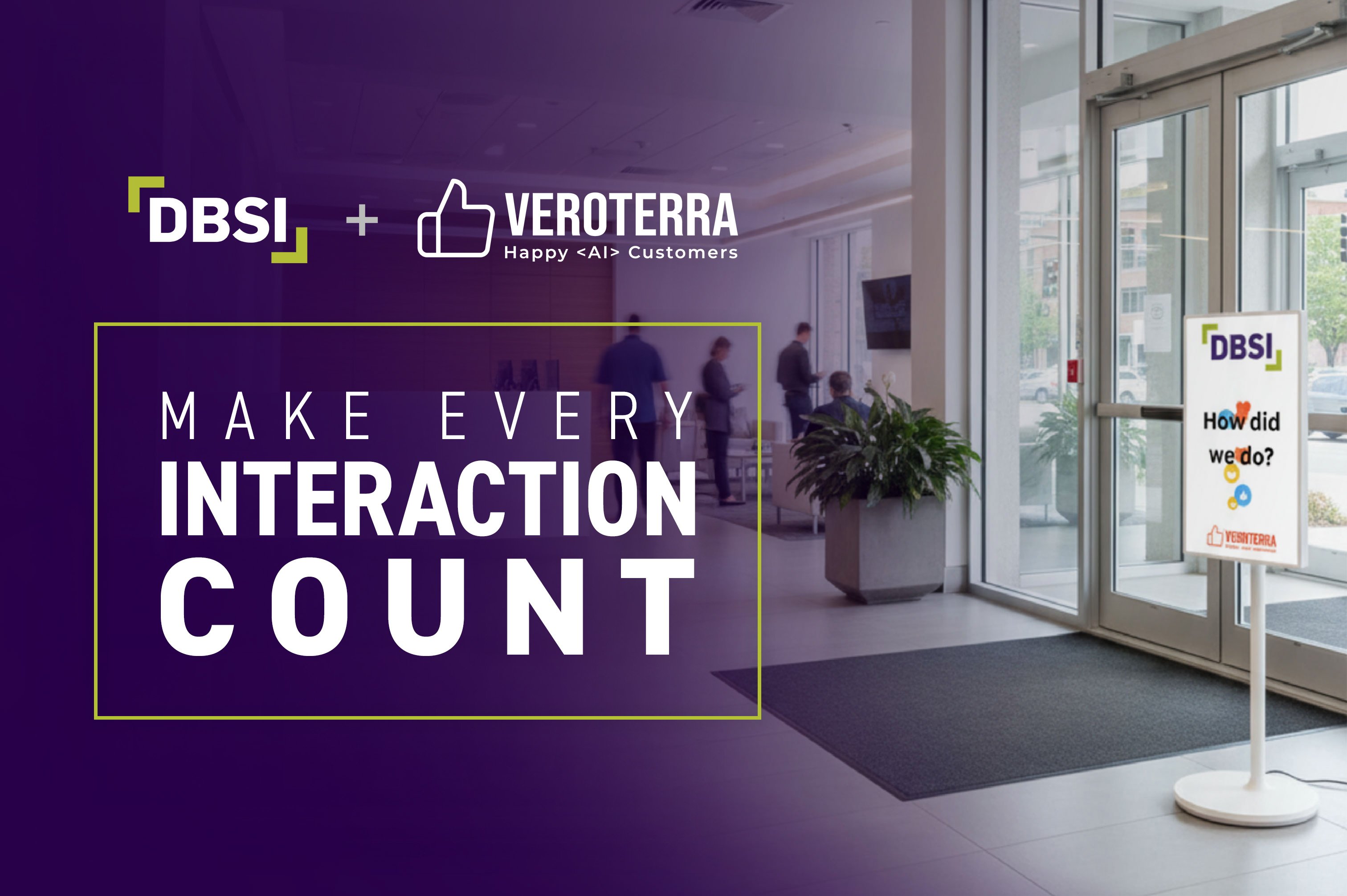4 min read
Neobanks and Challenger Banks vs. Traditional Banks: How Your FI Can Stand Out
 John Dillon
:
May 31, 2023
John Dillon
:
May 31, 2023
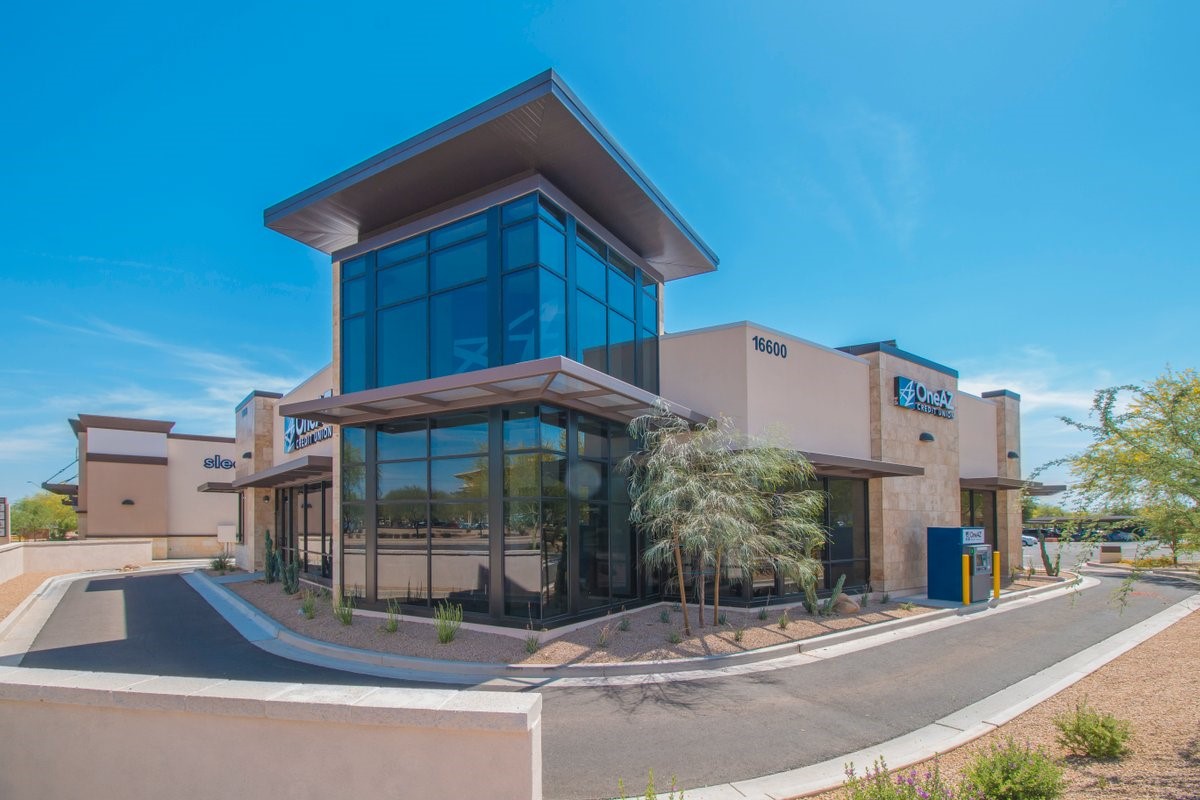
With online-only financial services gaining popularity, traditional financial institutions must find ways to innovate by improving technology, updating branch architecture, and enhancing customer service.
Like consumer goods, the variety of banking options customers have at their fingertips today is almost staggering. Neobanks and challenger banks have allowed clients to open personal or small business accounts online, qualify for introductory cash bonuses, or get working capital fast—all by just downloading their apps and applying. With new technology always on the rise, the possibilities are almost, well … endless.
As you can imagine, these rapid changes in the financial services industry have many traditional banking executives wondering what exactly they can do these days to attract more customers, maintain existing ones, and still manage to make a profit.
The good thing is, 65% of U.S. consumers still use traditional banks for their primary bank accounts according to a 2021 survey by the fintech group Galileo. However, the same survey also stated that consumers are using non-traditional financial tools more than ever and have reported just a 66% satisfaction rate when using traditional banks for their primary banking.
Is this a call to action for most traditional financial institutions? In our opinion, it’s a resounding “yes.”
Through collaborations with hundreds of traditional financial institutions each year, our team at DBSI uses best practices in design-build, branding, equipment installation, experiential services, and digital signage to elevate the in-branch experience. And collectively, we’re redefining self-service technology so customers can get personal, friendly service and round-the-clock convenience right where they live and work.
Before we discuss how your financial institution can stand out from the competition, we’ll first outline what’s available today beyond brick-and-mortar and give you some pros and cons of all banking options.
A Closer Look at Neobanks
Neobanks originated around 2010 when fintech companies aimed to satisfy consumer demand for more digital-friendly, mobile financial services. Operating 100% online, neobanks have no physical presence and serve customers solely through mobile apps and the internet. They typically offer products and services like checking accounts, savings accounts, budgeting tools, and API integrations with accounting and budgeting software.
Because neobanks don’t hold federal or state charters, they cannot offer a complete line of banking products and services and they cannot offer FDIC insurance on deposit accounts. However, a neobank can partner with a regulated entity to gain their charter—at which point they become “challenger banks.”
Pros of Neobanks
- Zero-fee to low-fee bank accounts with higher interest rates than traditional banks. Often, there are no maintenance costs, no hidden fees, and no minimum balance requirements.
- Opening an account is easy and fast; no introductory fees and no background check required.
- No physical branches required, which lowers operational costs and passes value on to customers.
- Digital convenience: customers can do their banking 24-7.
- API integrations with payments and accounting software; AI-enabled finance tools.
Cons of Neobanks
- Limited range of products; cannot sell credit, loans, or mortgages.
- Neobanks are unregulated and deposit accounts are not FDIC-insured.
- Can be more difficult to navigate a bank's online platform if the customer is not tech-savvy.
- No in-person customer service options.
Beyond Neobanks: What Challenger Banks Offer
These next-level versions of digital financial services are strikingly similar to neobanks and often get called neobanks by the masses. However, because challenger banks have obtained their banking licenses, they can provide more banking products and services than neobanks plus FDIC insurance on deposit accounts. Some challenger banks even have physical locations. Essentially, you could say challenger banks are “graduates” of neobanks.
Pros of Challenger Banks
- Zero-fee to low-fee bank accounts with higher interest rates than traditional banks. Often, there are no maintenance costs, no hidden fees, and no minimum balance requirements.
- Digital convenience: customers can do their banking 24-7.
- Wide range of banking products and services including loans and credit cards.
- API integrations with payments and accounting software; AI-enabled finance tools.
Cons of Challenger Banks
- No in-person customer service options unless the bank has physical locations.
- Unlike neobanks, opening an account is subject to a background check and obtaining credit is subject to a credit check.
- Can be more difficult to navigate a bank's online platform if the customer is not tech-savvy.
The Traditional Financial Institution is Evolving
Besides offering a full range of banking products and services, most traditional banks and credit unions have made great strides to provide their customers convenient online and mobile banking options. However, with 27% of U.S. consumers using online-only banks in 2022, traditional financial institutions need to keep investing in their digital infrastructures in order to remain competitive.
Pros of Traditional Financial Institutions
- Easy access to cash and check services.
- Personalized customer service options, in-branch consultations.
- FDIC insurance on deposit accounts.
- Community investment via fundraising, donations, and financial education initiatives.
Cons of Traditional Financial Institutions
- Higher account fees and lower savings interest rates than neobanks and challenger banks.
- Less convenient since some products and services require in-branch visits.
- Fewer API integrations with online and mobile banking applications.
How Traditional Financial Institutions Can Compete with Neobanks and Challenger Banks
Modernize Branch Architecture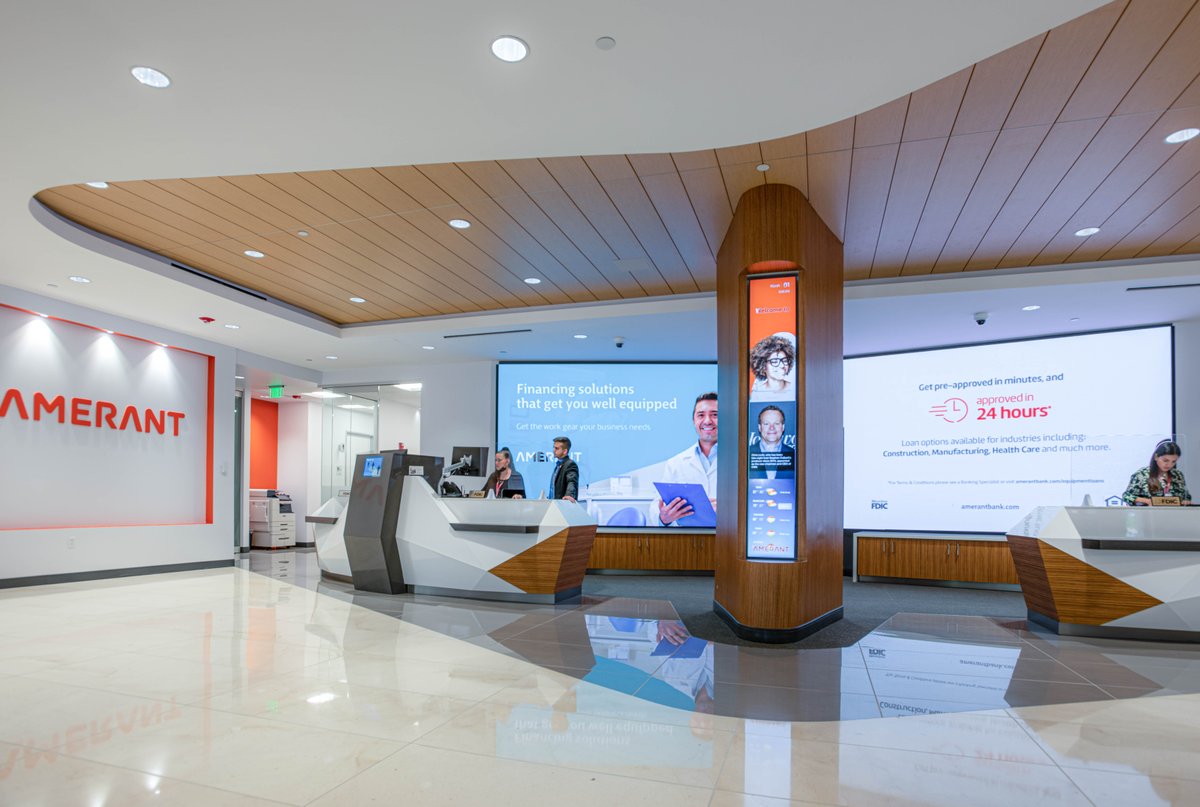
Although online and mobile banking services have increased dramatically in recent years, there’s still a need for customers to visit local bank branches—often for advisory conversations on loans, investments, and business decisions. To that end, an Accenture survey found that 66% of U.S. consumers still value a branch bank in their neighborhoods and 71% of U.S. consumers still turn to their branches to solve specific and complicated problems.
With sustained interest in branch visits, it’s important for financial institutions to modernize and update their branch architecture to maintain branding and ensure positive customer experiences. This is what Amerant Bank did when they chose DBSI to help them remodel their flagship branch location. With a new floor plan, modern architecture, and attractive digital signage, the branch successfully rebranded and redesigned its space. You can see more details about the transformation here.
Add Self-Service Options to the Branch Network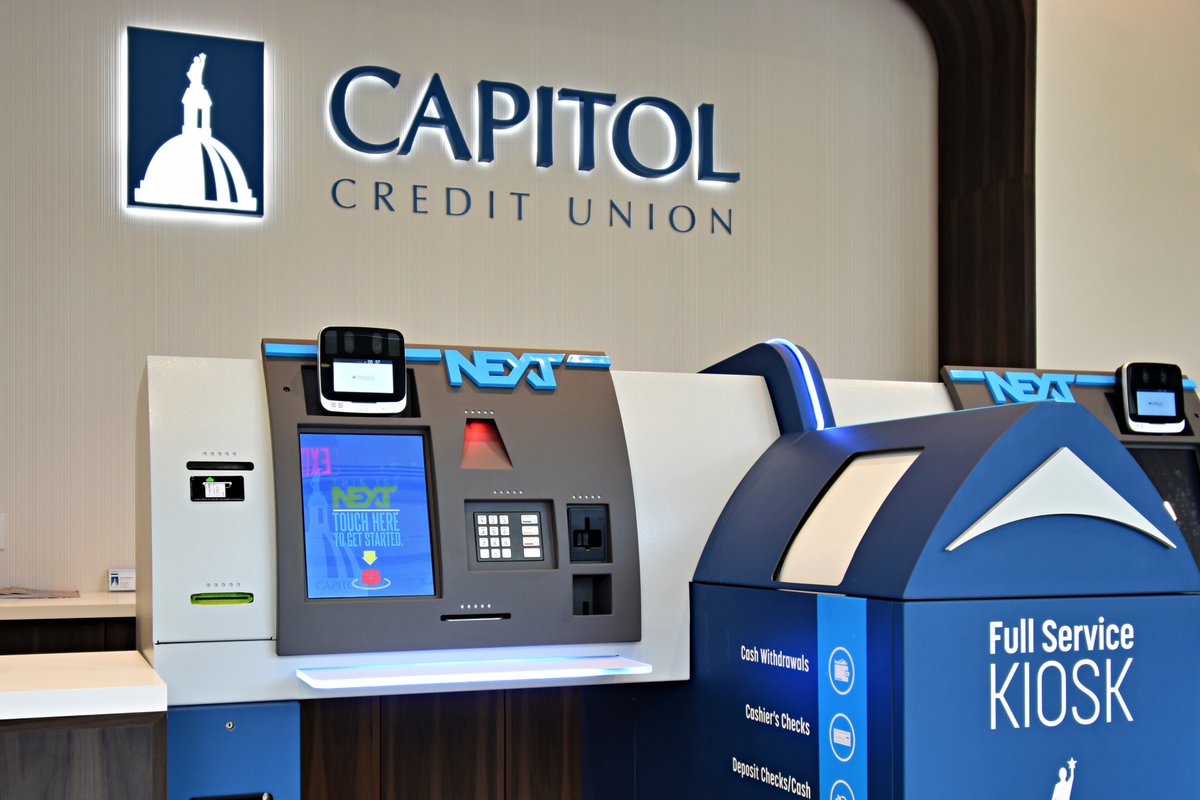
Considering the growing popularity of self-service solutions across industries, traditional financial institutions today can capitalize on this trend by placing ATMs, ITMs, and interactive kiosks strategically in and around branch locations or as standalone options within specified geographies.
Besides being capable of reducing a branch’s FTE requirements, self-service solutions can assist customers outside of traditional business hours and in locations that existing branches cannot service easily. In addition, self-service solutions placed at branch locations are able to support advisory-based banking approaches such as the Universal Associate Model.
Continue Investing in Online and Mobile Banking Capabilities
One of the biggest reasons customers make the switch to digital banking is for convenience. With the ability to deposit checks, transfer funds, add money to savings, and pay bills directly from their mobile devices, the need to visit a brick-and-mortar branch is declining. So, to keep your existing customers and attract new ones, your financial institution must offer easy-to-use online and mobile banking services and invest in reliable security infrastructure.
Future-Proofing Your Financial Institution With DBSI
Whatever you’re envisioning for the future of your branch network, DBSI has over two decades of experience in transforming branch architecture, advancing technological capabilities, and improving branch efficiency through carefully curated professional service programs. To learn more about how DBSI can help future-proof your financial institution, please choose a transformation starting point here and then reach out to one of our experts.


















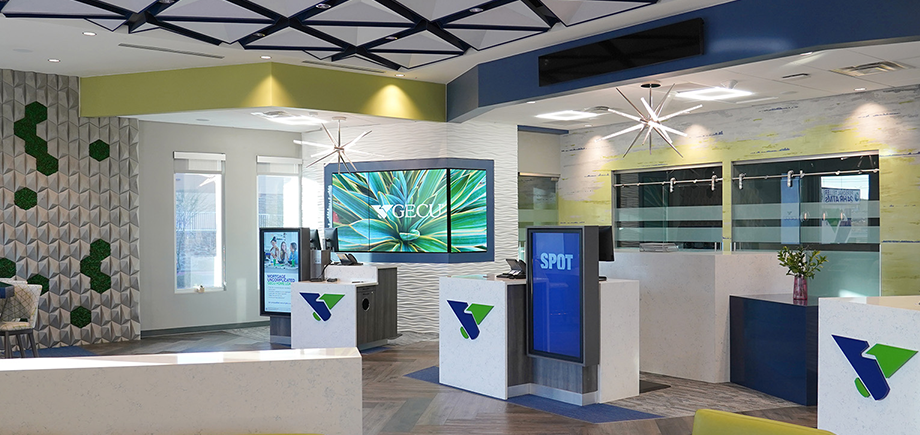





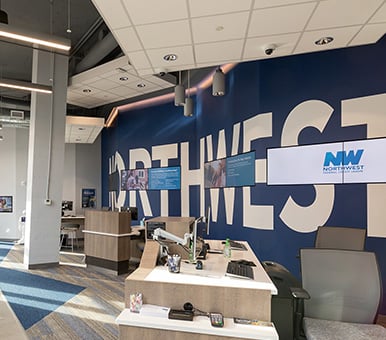










-1.png)
-4.png)
